Fix: Windows 10/11 Won’t Install or Download Updates
Microsoft releases a multitude of cumulative updates for Windows 10 and 11 each month. Typically, updates are automatically downloaded and installed through Windows Update; however, users may occasionally encounter various errors during the update process. For each potential error, there are tried and tested solutions suggested by users who have experienced similar issues.

Understanding why Windows Update errors occur is the first step in resolving them. Your error could be due to one of the following causes:
- Incorrect or corrupted Registry: An inaccurately modified or corrupt registry entry for wuauserv can lead to update errors, as this value is responsible for the downloading, detection, and installation of Windows updates.
- Windows Update Service not working: If the Windows Update service is disabled or stopped, it can prevent the installation of updates.
- Corrupted Software Distribution Folder: Should the contents of the Software Distribution folder become corrupted, you’ll likely encounter errors, as this folder stores the temporary update files required for installing Windows updates.
- Corrupt System Files: Corrupted system files are another common culprit as they are crucial for updating Windows. To repair any corrupted files, follow the instructions provided below.
Note that the causes of Windows Update errors are varied and not confined to the aforementioned list. Additional factors such as network issues, hardware and software incompatibility, specific bugs within an update, or other system conflicts may play a role. Identifying the precise cause of a Windows Update error in your particular case may necessitate a systematic troubleshooting approach.
1. Use the Windows Update Troubleshooter
Windows has a built-in tool specifically designed to diagnose and resolve common issues with Windows Update. The troubleshooter scans for problems and attempts automatic repairs.
- Navigate to Settings by pressing Windows + I, select Update & Security, then click on Troubleshoot.

- Click on Additional troubleshooters, locate Windows Update, and then select Run the troubleshooter.
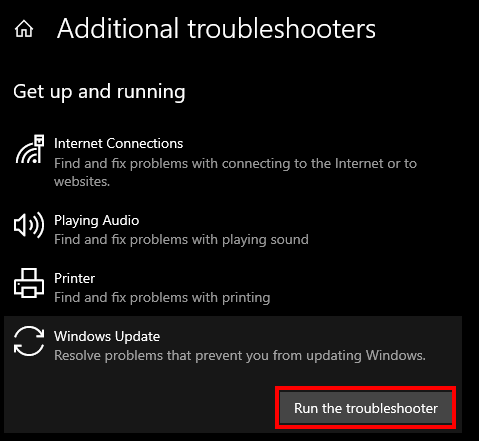
- The troubleshooter will begin detecting problems. Follow any on-screen instructions to permit the utility to attempt fixes for identified issues.
- Once the troubleshooter has completed its process, reboot your computer to allow any changes to take effect, and then check to see if you can now proceed with Windows updates.
2. Restart Windows Update Service
Begin by restarting the Windows Update service, which is fundamental to the updating process. Ensure that the service is running correctly.
- Press Windows + R to open the Run dialog.
- Type services.msc and click OK.
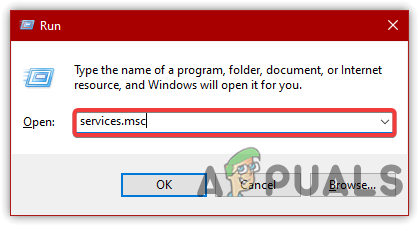
Opening Services Window - Type W on the keyboard to quickly navigate to the Windows Update service.
- Right-click Windows Update Service and select Properties.
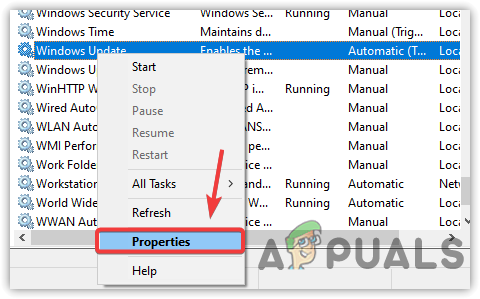
Navigating to Service Properties - Set the startup type to Automatic from the dropdown menu.
- Click Apply, then click Start if the service is not running.

Restarting Windows Update Service - Finally, click OK and verify whether the error has been resolved.
3. Reset Windows Update Registry Keys
Corrupted or incorrectly modified registry keys could be responsible for the errors. Resetting these keys to their default values is a useful step.
- Download the registry file from here to reset Windows Update registry values.
- Right-click the downloaded file and select Run as administrator.
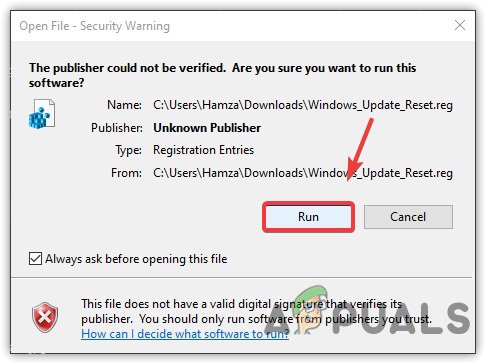
Running Windows Registry File - Click Yes to confirm the changes.
- After the process is complete, verify whether the error has been rectified.
4. Turn OFF Metered Connection
The Metered Connection feature is useful for managing data on limited plans or to restrict background downloads. However, it can also interfere with Windows updates.
- Right-click the Start Menu and select Settings.
- Navigate to Network & Internet and choose either Ethernet or Wi-Fi from the sidebar.

Navigating to Network Properties - Scroll down and turn off the Metered Connection if it’s enabled.
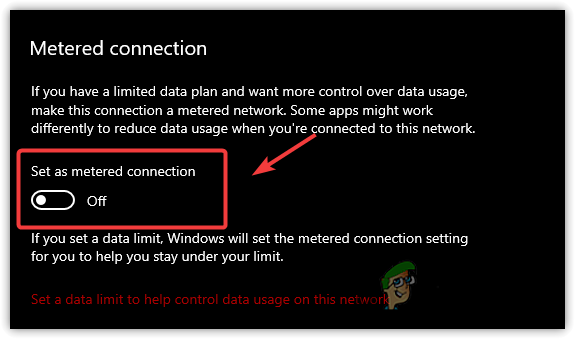
Turning Off Metered Connection - Once completed, recheck to see if the issue persists.
5. Clear And Rename Software Distribution Folder
The Software Distribution folder houses the Windows update files necessary for installing updates. Corruption within this folder can lead to update problems.
- Open the Start Menu and type “Command Prompt.”
- Right-click and select Run as Administrator.
- Copy and paste the following commands into the terminal:
net stop wuauserv net stop bits
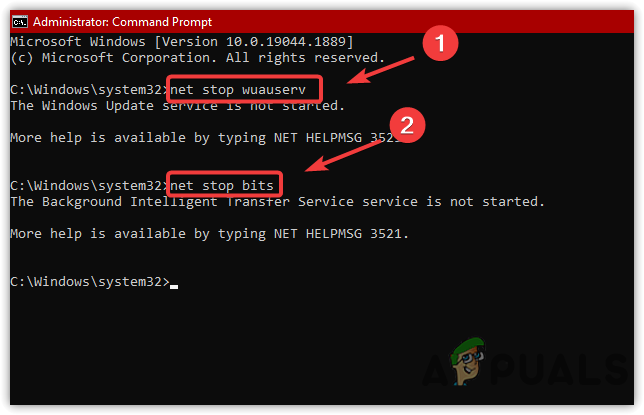
Stopping Windows Update Services - Press Enter, then minimize the terminal.
- Press Windows + R, enter the following path and hit Enter:
C:\Windows\SoftwareDistribution
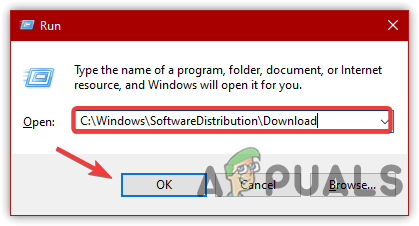
Navigating to the Software Distribution Folder - Delete all the files within the folder.
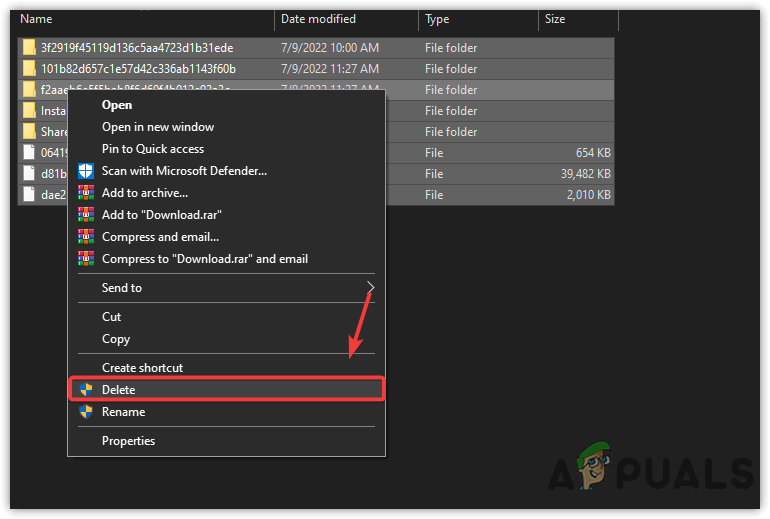
Deleting Software Distribution Files - Maximize the terminal and enter the following command to rename the folder:
rename C:\Windows\SoftwareDistribution SoftwareDistribution.bak
- Restart the services using the following commands:
net start wuauserv net start bits
- Lastly, attempt to update Windows and see if the error has been resolved.
6. Clear Temporary Files
Insufficient drive space can cause updates to fail. Windows typically requires ample storage to perform updates. To free up some space:
- Open File Explorer by pressing Win + E.
- Click on This PC, then right-click the drive containing Windows and select Properties.
- Click on Disk Cleanup.

Disk Cleanup - Select all categories under “Files to delete.”
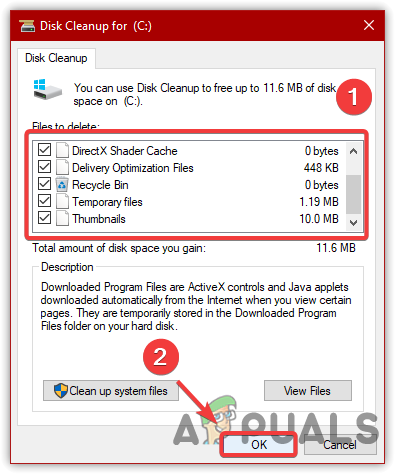
Removing Temporary Files - Click OK, then Delete Files.
- Once completed, check whether the error has been rectified.
7. Perform DISM and SFC Commands
DISM (Deployment Image Servicing and Management) and SFC (System File Checker) are command-line utilities that can repair Windows images and system files, respectively. If corrupted files are causing the error, these commands may help resolve the issue.
- Press the Windows key and search for “Command Prompt.”
- Run it as an administrator and enter the following commands:
DISM /Online /Cleanup-Image /RestoreHealth sfc /scannow
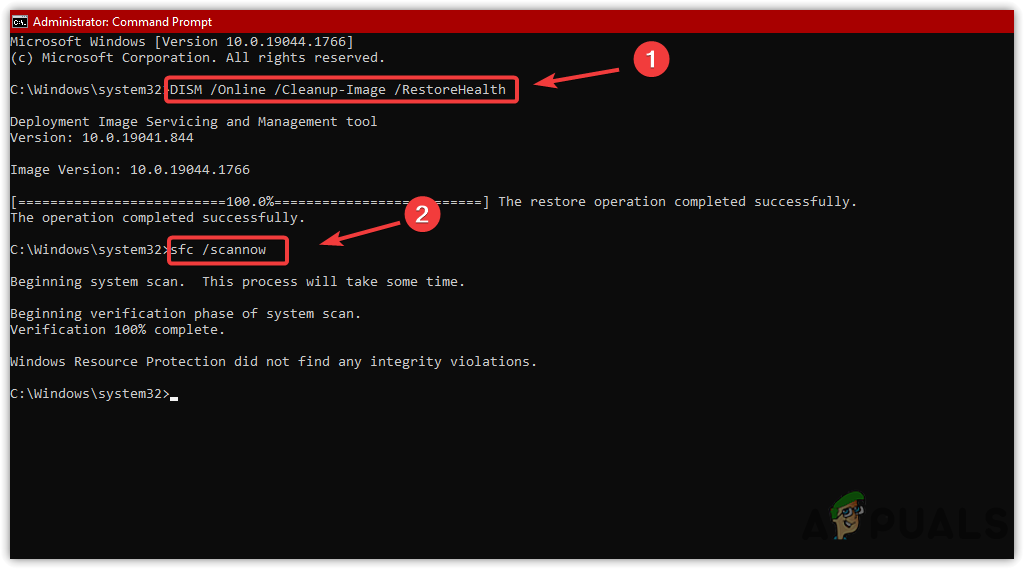
Repairing System Files - After the scans are complete, close the terminal and recheck for the error.
8. Download Windows Updates Via Update Assistant
If you continue to experience issues after trying the above steps, using the Windows Update Assistant to upgrade to the latest version may be helpful:
- Download and run the Windows Update Assistant.
- Click on Update Now and wait for the updates to finish downloading.

Upgrading Windows - Upon completion, Windows will automatically proceed with the upgrade.
9. Download Windows Updates Via Microsoft Catalog
Alternatively, you can manually download updates from the Microsoft Update Catalog. If you know the specific name of the update, you can find it in the catalogue, which archives every update released by Microsoft.
- Visit the Microsoft Update Catalog and search for the update by its name.
- Select the appropriate Download button for the update.

Downloading the Windows update - Click on the provided link to download the file.
- Once the download is complete, run the update file to proceed with the upgrade.